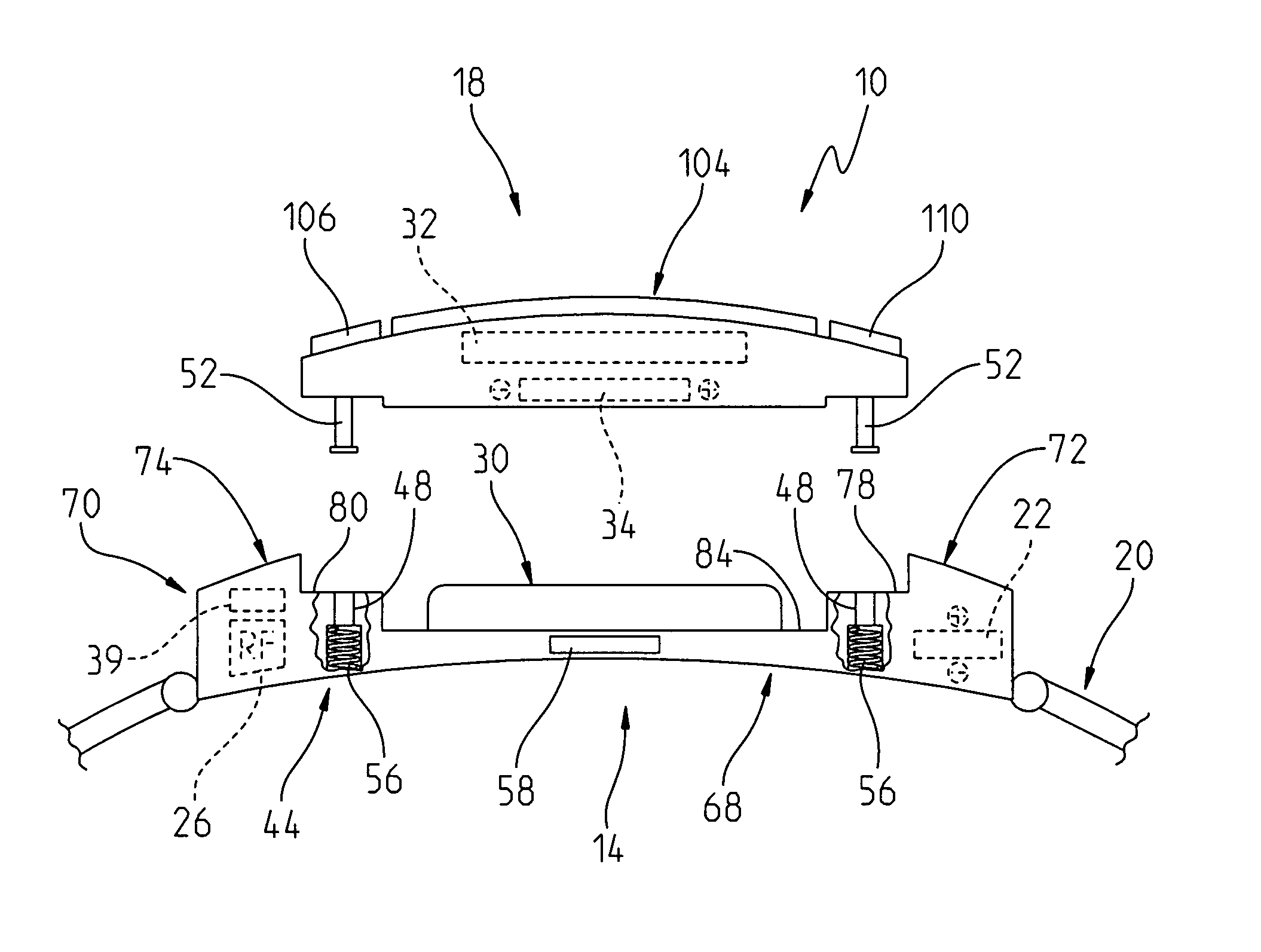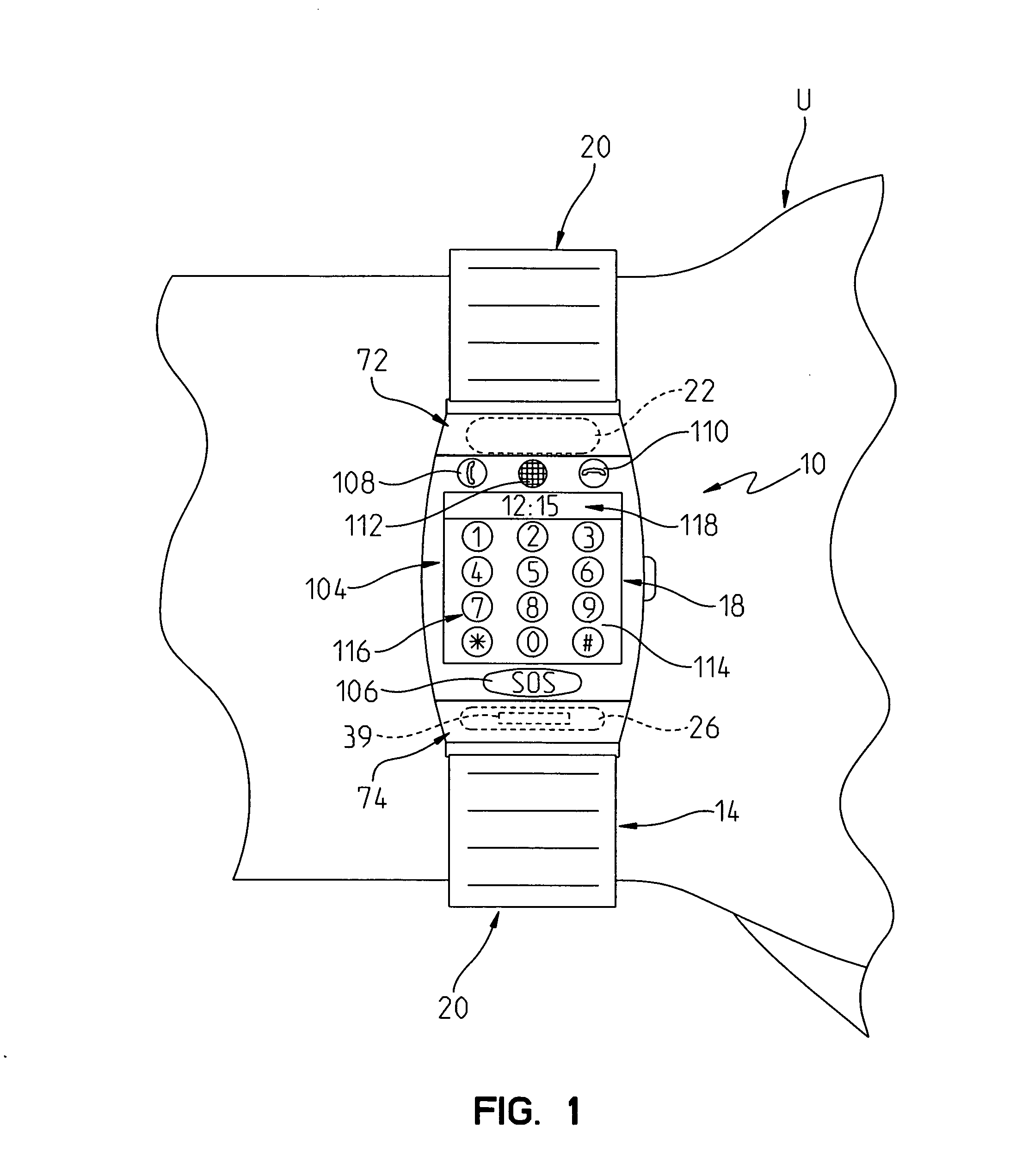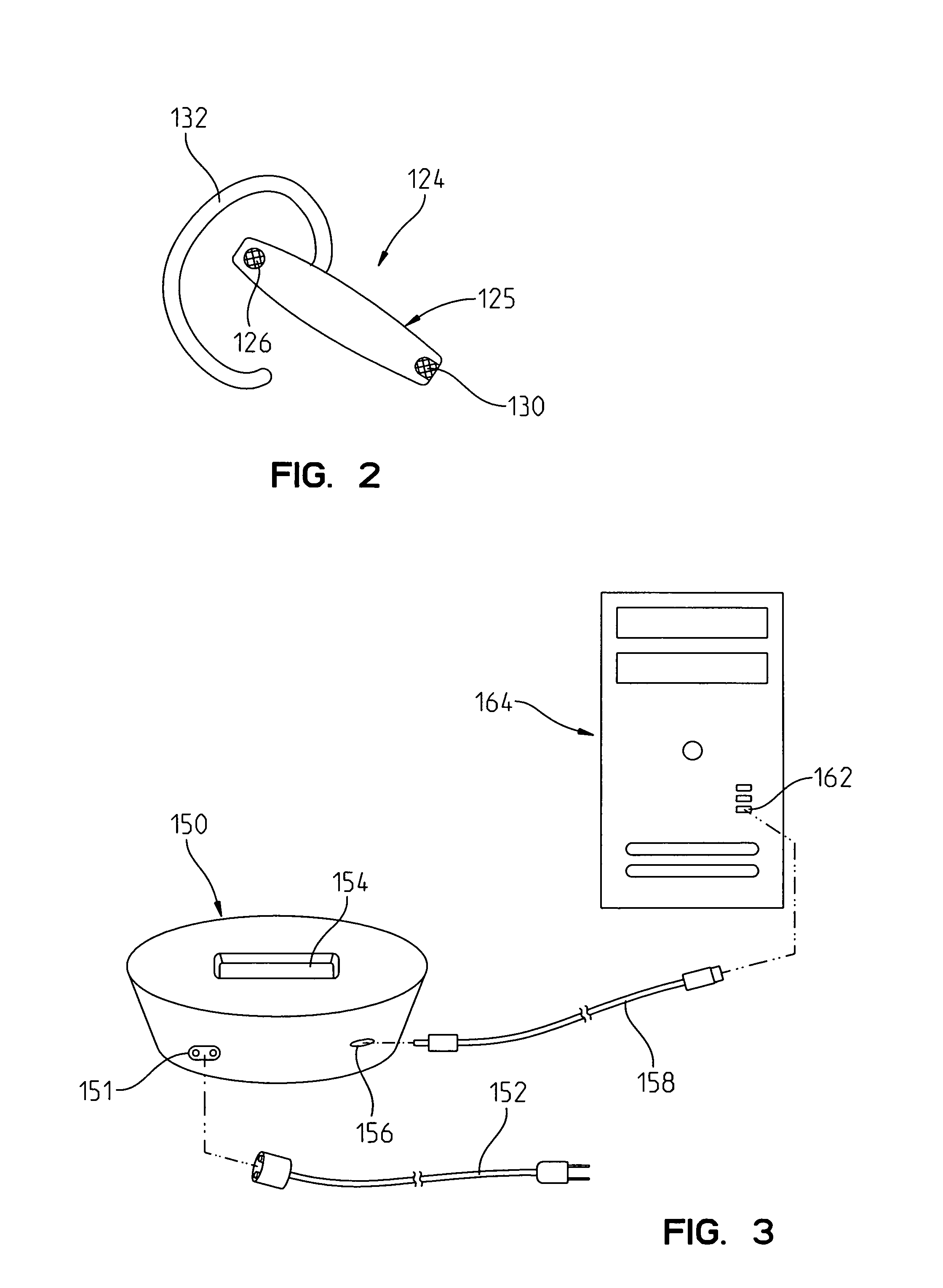Emergency alert device with mobile phone
a mobile phone and alert technology, applied in the field of emergency alert devices, can solve the problems of user injury, inability to communicate, and inability to reach a nearby phone, and achieve the effect of improving signaling ability
- Summary
- Abstract
- Description
- Claims
- Application Information
AI Technical Summary
Benefits of technology
Problems solved by technology
Method used
Image
Examples
Embodiment Construction
[0050]A wearable emergency alert device 10 that is wearable by a user U is shown in the drawings. The wearable emergency alert device 10 includes a wearable member 14, and a mobile phone member 18. The mobile phone 18 is selectively attachable to the wearable member 14. As such, it can be both engaged with the wearable member as is shown, for example in FIGS. 6 and 7; and the mobile phone member 18 can be detached from the wearable member 14 as shown in FIGS. 5, 5A and 8.
[0051]The wearable member 14 includes an attachment member 20 for attaching the wearable member 14 to a user's body part. In the embodiment shown in the drawing, the attachment member 20 comprises a band similar to the watchband that one might find on a wrist watch. The emergency alert device 10 shown in the drawings is designed to have an appearance and size of a wrist watch so that, like a wrist watch, it will fit on the wrist of a user U. As will be described in more detail below, the emergency alert device 10 no...
PUM
 Login to View More
Login to View More Abstract
Description
Claims
Application Information
 Login to View More
Login to View More - R&D
- Intellectual Property
- Life Sciences
- Materials
- Tech Scout
- Unparalleled Data Quality
- Higher Quality Content
- 60% Fewer Hallucinations
Browse by: Latest US Patents, China's latest patents, Technical Efficacy Thesaurus, Application Domain, Technology Topic, Popular Technical Reports.
© 2025 PatSnap. All rights reserved.Legal|Privacy policy|Modern Slavery Act Transparency Statement|Sitemap|About US| Contact US: help@patsnap.com



